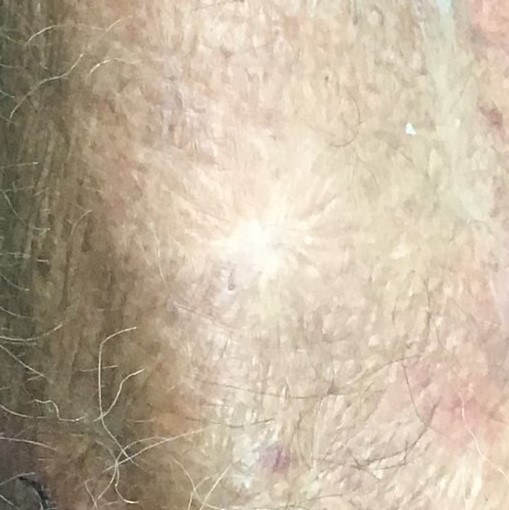
If you see a new skin growth on your body, it’s always important to take note and keep a close eye on how it changes. Regular dermatological screenings can help you detect and treat most common skin growths before they become displeasing, and at the end of the day, most skin growths are benign. However, since certain types of skin growths may resemble or serve as a precursor to cancer, vigilance is of paramount importance.
Common Skin Growth Types
Read on for information on each important skin growth’s name, as well as how it appears:
- Angioma – An angioma is a benign red growth that consists of clustered capillaries. They do not normally require treatment.
- Adnexal – This overarching term refers to benign growths from the sweat glands—syringoma—and benign lesions that originate from the follicle—trichoepithelioma—among other types of skin growths. They may be cancerous, so have yours looked at by a dermatologist.
- Cyst – Cysts are like pockets beneath the skin that may be filled with air, fluid, pus, or something else entirely. Most cysts are completely benign, but they are sometimes caused by cancers, so it’s a good idea to have them checked out.
- Dermatofibroma – A dermatofibroma is a small non-cancerous growth that may be raised, and is normally darker than the surrounding skin. They are usually found on the legs and do not usually require treatment, but they can be removed by a dermatologist.
- Digital Mucinous Pseudocyst – This type of psuedocyst is a small papule that usually grows on the end of a finger or a toe. Although it may resemble skin cancer on the fingernail, they are not usually dangerous. Still, a growing digital pseudocyst can be removed.
- Keratoacanthoma – A keratoacanthoma is a raised lesion with a depressed center that usually arises on skin that sees a lot of sun. Since it resembles squamous cell skin cancer, and may even be a precursor, it is important to have any supposed keratoacanthoma inspected by a dermatologist.
- Lipoma – Lipomas are not usually dangerous, but these fatty tumors found beneath the skin may eventually turn dangerous. Thus, they should be inspected by a trained dermatologist and potentially removed.
- Milia – Milia are small white bumps that appear when flakes of skin get trapped beneath the surface of the dermis. They often occur in babies, but can also appear in adult women. Although they can be monitored, they usually go away on their own and require no treatment.
- Mole – The general look and feel of a mole is well known. However, since a mole may be melanoma, it is important to be able to identify the early signs of skin cancer and know when to schedule a screening.
- Neurofibroma – Neurofibromas are so named because they grow on and can damage the nerves in your body. Those that grow on the skin are called cutaneous neurofibromas. While they may occur sporadically, they may also result from a genetic condition. So, you may wish to have a neurofibroma inspected or removed.
- Prurigo Nodularis – Prurigo Nodularis is a very itchy, symmetrically distributed rash. There are several possible treatments, so talk to your dermatologist if you are noticing this kind of elevated rash.
- Pyogenic Granuloma – Pyogenic Granuloma bumps are generally small and red, and although they may bleed or grow quickly, they are not usually dangerous. Still, it’s advisable to have yours looked at by a dermatologist.
- Seborrheic Keratosis – Seborrheic keratoses are brown, black or light tan scaly bumps. These benign growths look waxy, and may bleed in some cases, but they are not usually dangerous. However, since they may resemble cancer, it’s important to have them looked at.
- Verrucous Acanthoma – These growths resemble seborrheic keratosis, but they are the latter’s larger and thicker counterpart. Once again, you may wish to have yours looked at or removed.
- Xanthelasma – A xanthelasma can be either flat or elevated, but it always looks like a yellowish growth with clear borders, and it almost always appears near the eyes. Although they are not usually dangerous, they may be caused by an excess of cholesterol in the body. Your dermatologist can remove them if desired.
Growths are not the only changes that you might want to investigate more closely. It’s also a good idea to become more familiar with psoriasis, eczema, vitiligo, and other conditions that may or may not resemble cancer in some cases.
For Common Skin Cancers, Consider Image-Guided SRT
If a new skin growth turns out to be skin cancer, taking action quickly is the best thing that you can do. Where common skin cancers are involved, Image-Guided Superficial Radiotherapy (Image-Guided SRT) may be able to treat the disease. If you’re interested in learning more about this surgery-free alternative to traditional treatment, ask your doctor if it’s right for you today.








